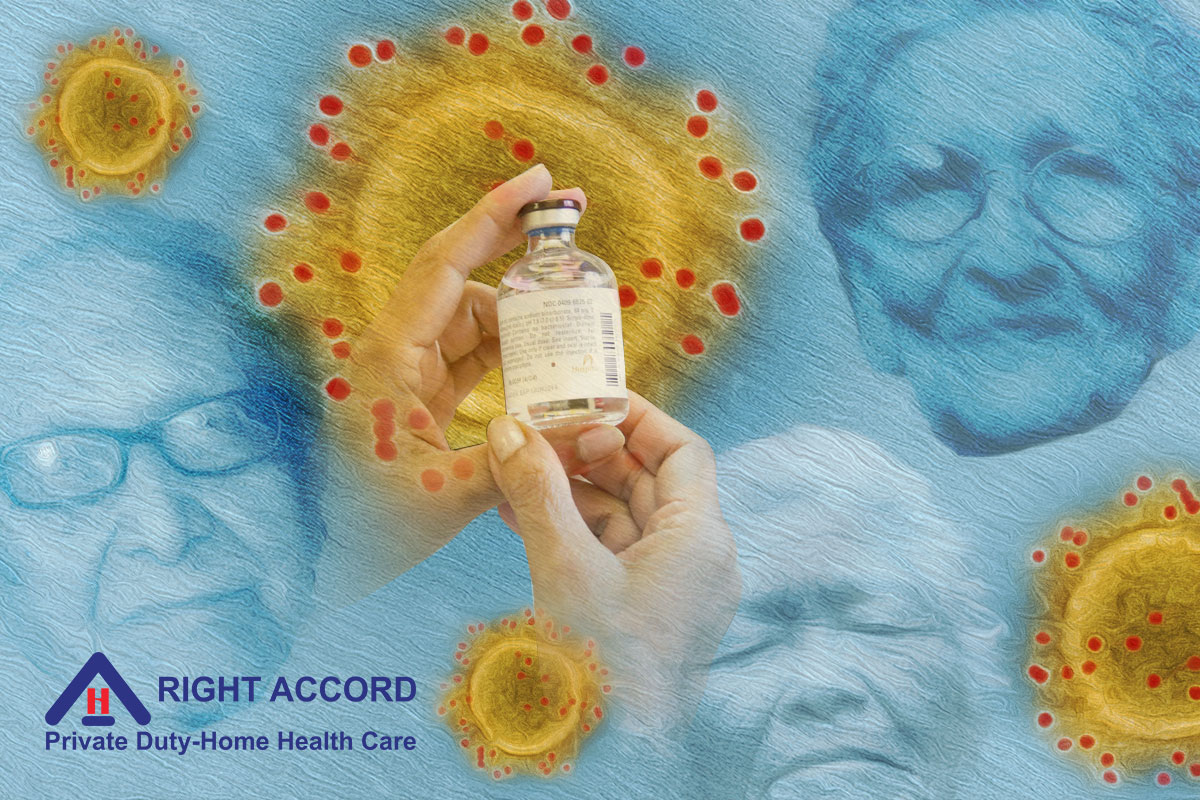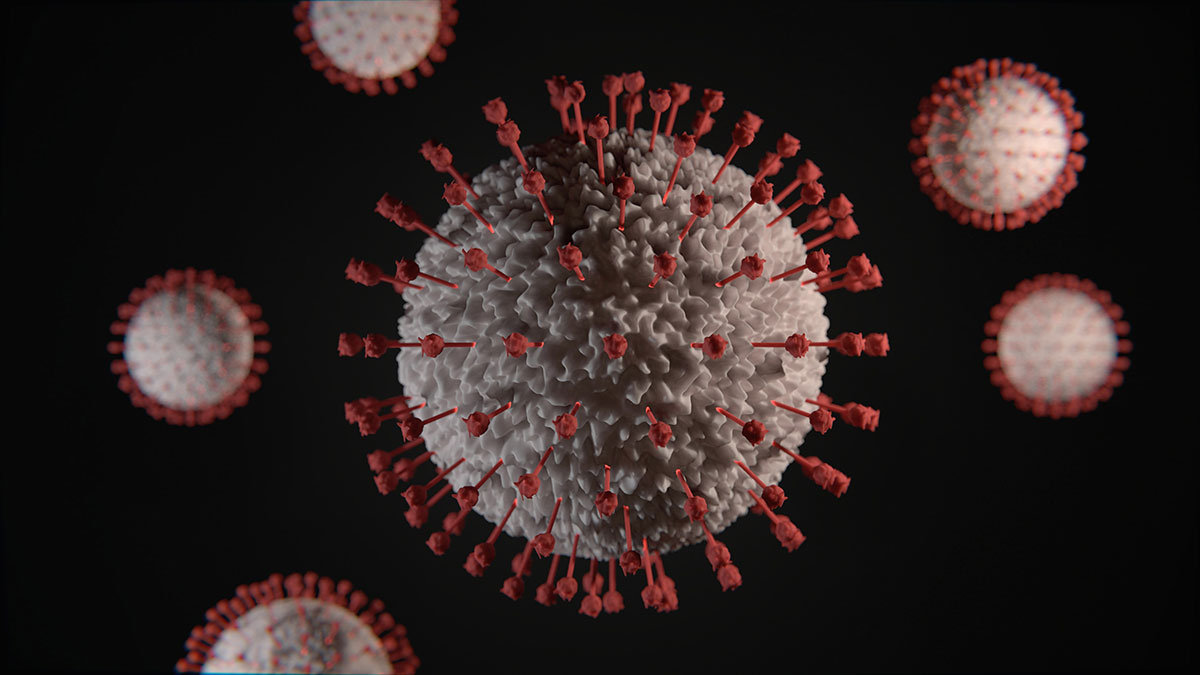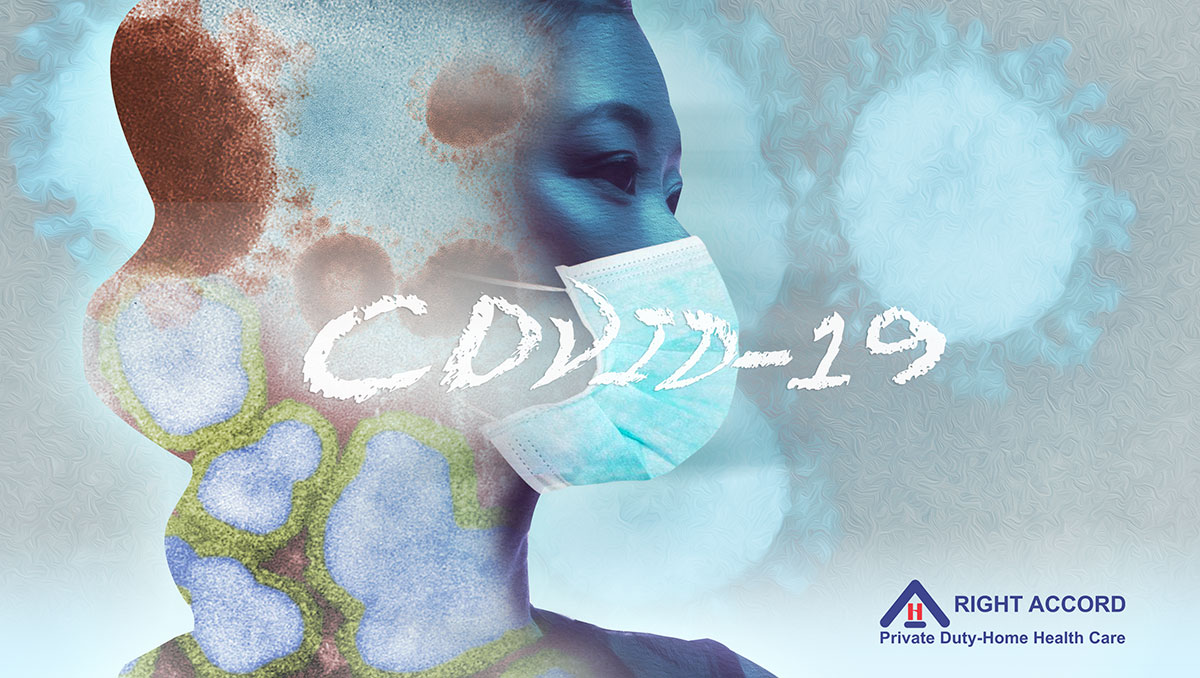· 16 min read
COVID-19 Treatment and the Elderly
There are still no drugs or biologics have been proved effective for the treatment of this new disease, coronavirus but people are not losing hope to find one.

By: Rosemarie Tamunday Casanova
As the world leaders, scientist and health experts struggle to find COVID-19 treatment, the objective of minimizing the health risk of coronavirus to the elderly people are among their top priorities. Elder people over the age of 80 are more susceptible to coronavirus disease. The risk to get coronavirus increases with age. In the children of the age group of 0-9 no fatalities recorded. In contrast, 15% of infected people over the age of 80 dies. Cope up with this disease is only possible if the person has a good immune system.

Photo by mojtaba mosayebzadeh on Unsplash
RISK FACTOR OF CORONAVIRUS IN ELDER PEOPLE
With the growing age, the ability of the body to fight against foreign substances down. White blood cells are responsible for immune action. In older people, the number of white blood cells decreases, and it became difficult for them to identify a new virus or pathogen. This fight between viruses and the police of the body can harm the older patient’s body system in other ways. Infection-fighting signals develop by cytokines, a protein.
During this immune response, cytokines are overproduced, which causes severe inflammation, high fever and organ failure. Increased ratio of death of the age group over 65-80 is not only due to virus which causes respiratory failure but also the cytokine storm.
Age is not only the factor to susceptible to coronavirus but chronic diseases like diabetes or cancer too. In Italy, on March 4, among the 105 patients who died two-thirds had three or more preexisting conditions. Hypertension, ischemic heart disease, and diabetes mellitus were the most common. The reason behind this is chronic diseases damage the organs and the efficiency of the organ decline.
Diabetes affects the nervous system. Increase the level of blood glucose in the body decrease immune response and make it difficult for the body to clear the lung infection. Mostly medicine taken by patients for the treatment of these types of disease suppresses the immune system of the body.
World Health Organization report on china’s outbreak, the fatality rate in people with chronic disease is13.2% for CVD, 9.2% for diabetes, 8.4% for hypertension, 8% for chronic respiratory disease and 7.6% for cancer.
WHAT IS CORONAVIRUS?
According to WHO, coronaviruses are the family of RNA viruses that cause illness from mild conditions like common cold to severe disease like severe acute respiratory syndrome (SARS) and the Middle East Respiratory Syndrome (MERS). Originally, these viruses were found in animals later, transmitted from animal to human. SARS transmitted from civet cat while MERS from a camel type. Some viruses of this family are circulating in animals that have not infected humans yet.
The name coronavirus is suggested due to their crown-like spikes when observed under an electron microscope hence named “Corona” which is a Latin word that means crown or halo. Most of the people have got infected with a member of this coronavirus family. Every year, the members of this family cause a mild infection like flu, cough, and cold. The main 4 subgroups of coronavirus found in human beings are alpha, beta, gamma, and delta.
The recent coronavirus was first time identified by Chinese authorities on January 7. The virus was originated from Wuhan city, China where wildlife was also traded illegally. Research studies said that the virus transmitted to humans from the animal through illegal pangolins.

Photo by Viktor Forgacs on Unsplash
SYMPTOMS
Lungs are the only organ infected by a coronavirus. Initially, symptoms appear by the immune response to the virus is fever with a dry cough which progressively leads to shortness of breath. Cough is usual, it can be continuous for an hour or patient suffers from coughing episodes three to four times a day.
Symptoms do not show immediately or for days because the incubation period of coronavirus is 14 days. Signs usually start to appear after five days or much later. In some patients sense of taste and smell loss is also observed but this symptom can be due to a common cold virus, so it is not considered as a key symptom for coronavirus. It is difficult to understand the coronavirus disease initially because symptoms can be confused by other viruses such as cold or flu virus.
DATA OF ELDER PEOPLE INFECTED BY CORONAVIRUS
Data of older patient reported in the US is as follows:
- 31-70% of people of 85 age group and above 85 require hospitalization and 31-59% of people at the of 65-84 require hospitalization.
- 6-29% of 85 years old patients admitted in ICU and while the percentage of 65-84 years old patients admitted in ICU is 11-31%.
- The fatal percentage of the older patient above 85 age is 10-27% and 4-11% of 65-84 years old.
PRECAUTIONS AND SAFETY MEASURES
Clean Hands
Keep clean the hands. Wash hands with soaps or alcohol-based hand rub for 20 seconds.20 seconds washing required for the removal of the pathogen from hands. Use sanitizer when soap is unavailable especially in a public place. Rub hands for 20 seconds with sanitizer Avoid touching eyes, nose and mouth with unwashed contaminated hands. Hands contaminated with the virus are responsible for the transfer of viruses to the body through mouth, nose or eyes.
Good hygiene is the number one prevention for coronavirus. Elder people are themselves very much concerned about their hygiene, but you need to take extra care of them in the case of any lag. A slight lack of care may prove dangerous.

Photo by 🇨🇭 Claudio Schwarz | @purzlbaum on Unsplash
Avoid Close Contact
Maintain distance with the person who is coughing and sneezing at least 1 meter. Social distancing is necessary during this pandemic disease. In many countries, a new law was passed obligating the citizens to stay away from each other and in the case of non-obligation, severe fines were imposed on them.
Stay Home
Stay at home especially if you are sick. In sickness immunity of human body decline and fatality chances due to coronavirus increases. Coronavirus spread from person to person. Avoid unnecessary outgoing except if medical care required. Especially for older people, staying in the home is necessary. Elder people love to meet relatives that are a good way for their time passing. However, until this pandemic is strong, it is highly recommended to cancel their meetings with relatives except for house members.
Avoid Stress Increasing Activity
Do not panic, avoid too much hearing of pandemic news on social media. Take a healthy meal with regular exercise. The only way to prevent coronavirus is to boost up the immunity. Exercise increases immunity and relieves stress.
Many elder people love to walk and do light exercises. However, there are still many who avoid doing exercises because of physical illness. Guide them for easier ones so they have an activity on hand as a shield against coronavirus. Keep the home environment fresh. Not only it is good for the family bond, but it will also help you save elderly people from this pandemic because of lowering stress. In many countries, restaurants are closed indicating that junk food should be avoided.
Cover Mouth
Whenever coronavirus carrier sneeze or cough droplets of coronavirus spread.Like the influenza virus coronavirus spread through respiratory vapor. When sneeze or cough cover the mouth with the inside of your elbow because a person usually does not touch his elbow. Trash the used tissue immediately.
Use Disinfectant
Coronavirus settles at the surfaces of objects like mobile phones, tablets, and tables. Clean the objects by disinfectants. In this case, special caring is required for the objects that are in use of elder people. It may be a difficult exercise because elder people in your home require more care; however, treating them in the home is better than leaving them in quarantine centers all alone. Every person in the home should keep a distance from the items that are under the use of elders and the same care should be done by elders.
COVID-19 TREATMENT
There are many fatal diseases, but people are not afraid of it. There are two reasons for it. Either we have a mode of treatment available for them like a vaccine or medicine or it doesn’t spread this much easier. Since Corona is a virus, no medicine is effective in its treatment. On the other hand, the vaccine of coronavirus is not available yet. So, we are left with the only option i.e. prevention.
Avoid physical contact, take care, so it doesn’t spread because once it starts spreading, it multiplies and a whole population of an area is infected from this pandemic. Therefore, despite the economic and business losses to a large extent, governments of many countries opted for the lockdown so the spreading of this disease can be controlled. Until now the treatment of COVID-19 is recommended by anti-virals with no specificity.

Photo by NCI on Unsplash
Infection Control
Infection can control by admitted the patient in an isolated room and asked them to wear surgical masks. Health care professionals give their services by wearing all personal protection equipment.
Investigational Drugs and Biologics
There are still no drugs or biologics have been proved effective for the treatment of this new disease, coronavirus. Investigation of several anti-virals, immunotherapeutic agents and vaccines are continuing to develop an effective therapy for the coronavirus treatment.
Antiviral Agents
Remdesivir
Remdesivir is an agent of the antiviral family act as a nucleotide analog prodrug. Its efficacy is observed against other types of human coronavirus including severe acute respiratory syndrome coronavirus (SARS-CoV) in 2013 while in 2012 against MERS-CoV. Remdesivir is in phase 3 of clinical trials for action against coronavirus. Remdesivir is considering more effective than the combination of lopinavir and ritonavir because of its therapeutic activity. It treats lung pathology in mice by decreasing viral load and improves lung function while lopinavir/ritonavir combination only improves the function of the pulmonary system.
Lopinavir/Ritonavir
Studies show the effectivity of lopinavir/ritonavir combination when giving along with IFNb in mice infected with MERS-CoV.
Other Investigational Antivirals
Rintatolimod, Azvudine, Grazoprevir, Piltidepsin, Favipiravir are the drugs of antivirals are testing for the treatment of coronavirus.
Rinatatolimod, a broad spectrum anti-viral, is a toll-like receptor 3 agonists tested in Japan for the action against COVID-19.
From Spain in vitro studies shows the efficacy of piltidepsin, a didemnins, by targeting EF1A. EF1A is a key component responsible for viral spread and multiplication.
Immunomodulators and Other Investigational Therapies
Interleukin-6 Inhibitors
As mentioned above cytokines storm develops in coronavirus patients caused severe damage to lung tissues. Several inflammatory mediators release including interleukin-6 as a result of coronavirus infection. This inflammatory response leads to the severe illness of the patient with shortness of breath. Interleukin-6 inhibitors can be a better agent to prevent lung damage.
Studies reported about sarilumab, interleukin-6 inhibitor, an agent prevent death, hospitalization, and need for ventilation. According to a study, tocilizumab, another IL-6 inhibitor, is effective for severe cases of coronavirus patients.
Hydroxychloroquine and Chloroquine
Hydroxychloroquine and Chloroquine are the drugs of class antimalarial but also used for autoimmune disease because of having immunomodulatory actions. They are considered as an effective treatment yet, as they are inhibitors of heme polymerase, an enzyme. Wang et al reported that Chloroquine effectively inhibits SARS-CoV-2 in vitro but the effectivity of hydroxychloroquine is more than chloroquine.
Azithromycin
Azithromycin is an antibacterial agent. A study in France has been done for investigating the effectivity of azithromycin and hydroxychloroquine and found approximately the same results. 100% clearance observed in patients of SARS-CoV-2. These medications cannot be in a broader population due to their side effects of QT prolongation and increased risk of cardiac arrest.
Convalescent Plasma
People who are recovered from coronavirus developed antibodies against coronavirus. The FDA is facilitating access to convalescent plasma, antibody-rich products that are collected from eligible donors who have recovered from COVID-19. This product used in seriously ill persons or a person facing life-threating conditions.
Nitrous Oxide
Nitrous Oxide is a supportive measure for the coronavirus treatment. Inhaled nitrous oxide treat pulmonary hypertension, improves breathing so need pf ventilation decline.
COVID-19 VACCINE: A NEW HOPE

Photo by NCI on Unsplash
Several vaccines for COVID-19 are already developed and being distributed across the globe. Here are some of the vaccine development companies that came out in the race for COVID-19 vaccine:
Moderna
About Moderna: Moderna is a biotechnology company based in Massachusetts that focuses on producing vaccines based on mRNA (messenger RNA).
According to the Centers for Disease Control and Prevention (CDC) website, the vaccine, also known as “mRNA-1273”, basically works by using mRNA, a genetic molecule that contains the instructions for producing proteins in our body. This vaccine needs to be given in two separate shots 28 days apart.
CDC website noted that the mRNA in the vaccine will instruct cells to make a harmless spike protein, which is seen on the surface of SARS-CoV-2, the new variant of coronavirus that causes COVID-19 respiratory disease. The protruding spikes in the cell will then be recognized by the immune system and cause antibodies to be produced.
These antibodies slow down or stop the coronavirus from attacking other cells by attaching itself to the virus’ spikes. They may also label the virus so other cells can discover it and destroy it.
Status Development: Moderna announced in November 2020 that it has finished the first interim analysis of the Phase 3 study for mRNA-1273. Moderna applied for emergency use authorization to the U.S. Food and Drug Administration (USFDA) on November 30 and finally made available to the public in December 2020. According to the company, the study showed that its vaccine has an efficacy rate of 94.5 percent.
Pfizer-BioNTech
About Pfizer and BioNTech: Pfizer, a US multinational pharmaceutical company, is also known as one of the world’s largest pharmaceutical companies. BioNTech SE, on the other hand, is a German biotechnology company focused on personalized immunotherapy.
Pfizer-BioNTech’s vaccine is similar to Moderna’s mRNA-1273 in the sense that it uses mRNA to eliminate the new coronavirus SARS-CoV-2.
Status Development: Pfizer and BioNTech completed their Phase 3 study for the vaccine on November 18, 2020. Pfizer’s vaccine showed a 95 percent efficacy rate during its study.
Meanwhile, the USFDA on December 12 granted an emergency use authorization for the vaccine, which was used on December 14, 2020 in New York City. In addition, the United Kingdom, the first country in the world to conduct mass immunization against COVID-19 on December 8, 2020, also used the vaccine developed by BioNTech and Pfizer.
Gamaleya
About Gamaleya: The Gamelaya Research Institute of Epidemiology and Microbiology is a Russian medical-research institute founded in 1891.
According to Gamelaya, the institute runs one of the most unique “virus libraries” in the world, and has its own vaccine production facility. Besides their work on the COVID-19 vaccine, they are also developing vaccines against Ebola and MERS.
Sputnik V, a two-part adenovirus-based vector vaccine, uses a vector (an engineered virus without the genes necessary for reproduction) to send a message into cells to produce spike proteins. The institute explained that the gene from adenovirus, which causes the infection, is removed while a gene with the code of a protein from another virus spike is inserted.
This inserted element is safe for the body, but it still helps the immune system to produce antibodies, which prevent infection, it explained.
Status Development: Gamaleya on November 24, 2020 announced that it has finished the second interim analysis of clinical trial data for Sputnik V. Gamaleya also reported that the Sputnik V vaccine’s efficacy is confirmed at 91.4% based on data analysis of the final control point of clinical trials. There were some scientists that recently expressed concerns about Sputnik V due to a lack of safety data. However, Russia denounced the criticisms.
AstraZeneca
About AstraZeneca: AstraZeneca is a British-Swedish multinational pharmaceutical and biotechnology company that specializes in the development and commercialization of prescription medicines. They have been developing medicines for the treatment of cardio-vascular, metabolic, respiratory, inflammation, autoimmune, oncology, and neurological diseases. AstraZeneca collaborated with the University of Oxford to create a COVID-19 vaccine.
AstraZeneca vaccines use a genetically altered virus called an adenovirus, like Russia’s Sputnik V. This virus, which is safe for recipients, will carry spike protein (such as the crowns in coronavirus). In theory, injecting this can help the immune system recognize and fight against the coronavirus.
Status Development: AstraZeneca and the University of Oxford announced on December 8, 2020 that it finished the Phase 3 interim analysis for the vaccine.
The researchers noted that the efficacy rate for two doses – with the first dose at half strength – reached 90 percent. While a combination of two full-strength doses only resulted in 62 percent efficacy.
Sinovac
About Sinovac: Beijing biopharmaceutical company Sinovac was founded in 2001, and focuses on vaccine research, development, and manufacture against infectious diseases such as H1N1 flu, COVID-19.
Sinovac’s CoronaVac relies on inactivated pathogens that are grown and killed in laboratories, unlike Moderna, which uses RNA in its vaccines. Just like the inactivated vaccines used for polio, this vaccine uses the killed viruses to produce antigens that signal the immune system to attack the COVID-19 virus.
Status Development: Sinovac has been approved for emergency use in high-risk groups in China since July. It has an efficacy rate of 50.4% and like all the other vaccines, it also requires two doses.
Many Asian countries, including Singapore, Malaysia and the Philippines, have signed deals with Sinovac, and in January 2021 Indonesia began their mass vaccination program with Sinovac’s vaccine. The Sinovac vaccine was also approved for emergency use in Turkey. The company is also known to have secured deals in Brazil and Chile.
Novavax
About Novavax: Novavax, a late-stage US biotechnology company, focuses on the discovery, development, and commercialization of vaccines to prevent serious infectious diseases. The Maryland company received a $1.6 billion grant from the US government’s Operation Warp Speed to produce 100 million doses of vaccine by 2021.
Status Development: Novavax said in a statement on November 30, 2020 that it has completed the enrollment of its 15,000-patient Phase 3 trial in the United Kingdom. In addition, the company added that all patients have been enrolled in Phase 2b trials in South Africa.
According to the company website, Novavax COVID-19 Vaccine Demonstrates 89.3% Efficacy in the United Kingdom (UK). Novavax also announced successful results of its Phase 2b study conducted in South Africa.
CONCLUSION
Coronavirus is not a fatal disease it can be cured by hospitalization and isolation of the infected person. But the problem lies that the healthcare of many countries is privatized and governments are unable to provide healthcare facilities to a large population if a large population turn towards hospitals. Since it spreads through interaction, healthcare professionals around the world are advising people to remain in their homes and do minimal physical interaction. More in home senior care is required for elders as their immune system is unable to fight against COVID-19. If you are taking all precautionary measures, then there is no need to get panic as panic only increases the chance of getting infected.



